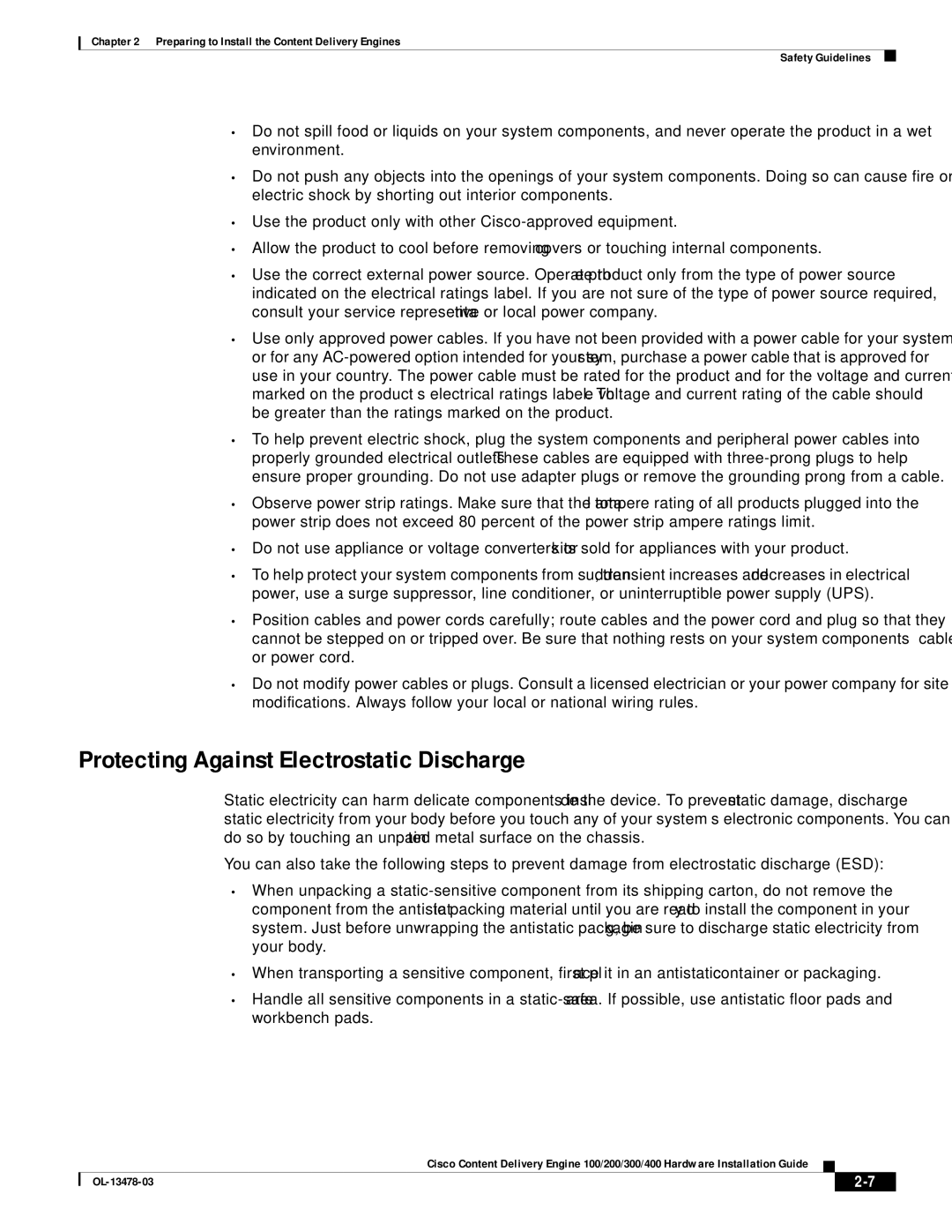
Chapter 2 Preparing to Install the Content Delivery Engines
Safety Guidelines
•Do not spill food or liquids on your system components, and never operate the product in a wet environment.
•Do not push any objects into the openings of your system components. Doing so can cause fire or electric shock by shorting out interior components.
•Use the product only with other
•Allow the product to cool before removing covers or touching internal components.
•Use the correct external power source. Operate the product only from the type of power source indicated on the electrical ratings label. If you are not sure of the type of power source required, consult your service representative or local power company.
•Use only approved power cables. If you have not been provided with a power cable for your system or for any
•To help prevent electric shock, plug the system components and peripheral power cables into properly grounded electrical outlets. These cables are equipped with
•Observe power strip ratings. Make sure that the total ampere rating of all products plugged into the power strip does not exceed 80 percent of the power strip ampere ratings limit.
•Do not use appliance or voltage converters or kits sold for appliances with your product.
•To help protect your system components from sudden, transient increases and decreases in electrical power, use a surge suppressor, line conditioner, or uninterruptible power supply (UPS).
•Position cables and power cords carefully; route cables and the power cord and plug so that they cannot be stepped on or tripped over. Be sure that nothing rests on your system components’ cables or power cord.
•Do not modify power cables or plugs. Consult a licensed electrician or your power company for site modifications. Always follow your local or national wiring rules.
Protecting Against Electrostatic Discharge
Static electricity can harm delicate components inside the device. To prevent static damage, discharge static electricity from your body before you touch any of your system’s electronic components. You can do so by touching an unpainted metal surface on the chassis.
You can also take the following steps to prevent damage from electrostatic discharge (ESD):
•When unpacking a
•When transporting a sensitive component, first place it in an antistatic container or packaging.
•Handle all sensitive components in a
Cisco Content Delivery Engine 100/200/300/400 Hardware Installation Guide
|
| ||
|
|
